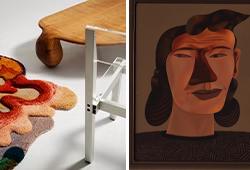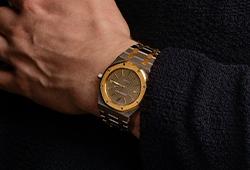Maria Wiik
"L’oeuf cassé" (The broken egg)
Signed M Wiik and dated 1882. Oil on canvas 59 x 37 cm.
Provenance
Private collection, USA.
Exhibitions
The Salon, Paris, 1882, no. 2700. Sold to a private American collector.
Literature
The painting mentioned in the following contemporary articles and reviews: Helsingfors Dagblad (HD) 25th of May and 30th of June 1882 as well as Hufvudstadsbladet (Hbl) the 29th of June and 31st of December 1882 (according to Katerma); Helena Westermarck, "Tre konstnärinnor", 1937, mentioned pp 83-84; Svenska litteratursällskapet i Finland, "Historiska och Litteraturhistoriska Studier 13", Helsinki 1937: Helena Westermarck; 'Maria Wiik. En biografisk studie', mentioned pp 127-128; Pia Katerma, "Maria Wiik: 98 kuvaa", Helsinki 1954, listad in the catalogue, p. 196, no. 86 under the title "Särkynyt muna" (The broken egg). Compare also no. 85, study for the same painting, extensively described and discussed p. 195; Riitta Konttinen, "Maria Wiik", 2000, illustrated full page, p. 59.
More information
Maria Wiik made her public breakthrough with the genre portrait "Marietta", which was shown at the Paris Salon in 1880, a motif typical of the truth-seeking realism of the time. In the current "L 'oeuf cassé", the artist goes even further in the environmental description, as the motif also has a clear narrative content. Wiik's colleague and biographer, the artist Helena Westermarck, wrote the following about this particular work, "But in the autumn of 1881, the artist returned to Paris, where she rented a studio and settled for the autumn. The main result was the painting L'oeuf cassé, which depicts a playful little girl busy assembling crushed eggshells. The idea of the painting came to the painter one day when, as usual, she ate breakfast in her studio. After the meal saw her little model eagerly occupied with this strange problem. The painting was exhibited at the Salon in 1882. Here at home, it was never exhibited since it found a buyer from America when it was exhibited in Paris." (Westermarck, 1937, pp. 83-84).
"L 'oeuf cassé" is in many ways very representative of Maria Wiik's art. Although she remained childless, Wiik had a particular fondness for painting children. Several children's motifs by her are today included in the collections of the Finnish national museum, Ateneum. In general, Maria Wiik is now represented in most Finnish (and also several international) museums. She was also one of the artists that the prominent Finnish art collector Gösta Stenman was particularly interested in.

















































